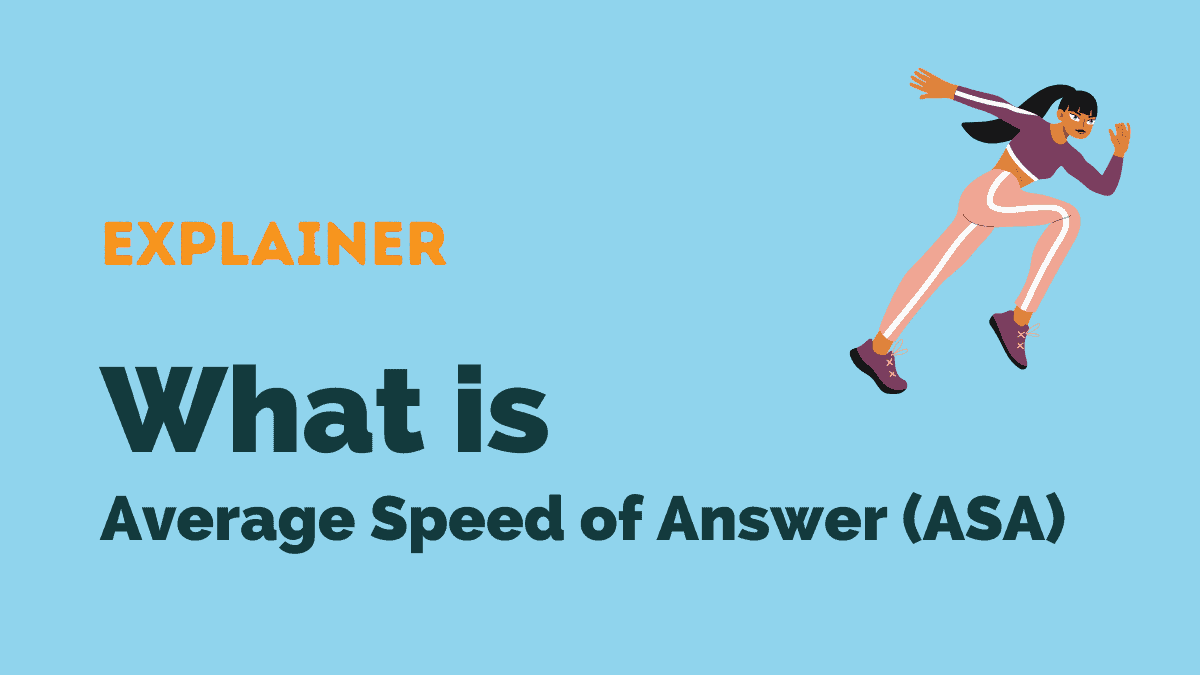In this post:
- Why must contact centers measure ASA?
- How to measure the average speed of answer
- Long average speed of answer explained
- How to keep ASA reasonable
The average speed of answer (ASA) is the time a caller must wait to reach an agent after they’ve entered a queue.
However, ASA does not include time spent navigating your IVR system, or any other tool you use prior to the call queue (although that is still a vital part of the entire customer service experience.)
Why must contact centers measure ASA?
Customers are easily aggravated by long wait times. (70% get ‘extremely frustrated’ waiting on hold.)
Average speed of answer also offers insight into why customers are abandoning calls. As an industry norm, wait times as long as 30 seconds are considered reasonable. Beyond that large numbers of customers are likely to abandon.
We therefore associate a short ASA with both exemplary customer service and happy customers.
How to measure the average speed of answer
Here’s a handy illustration of the equation for the average speed of answer:
The total waiting time includes the ringing time after the caller exits a queue and is about to speak with a contact center representative.

Long average speed of answer explained
Common causes for delays when connecting the caller with the best agent include:
Long average handling ti/me – if your agents are preoccupied with long calls (high average handling time), queuing customers will have to wait for equally long periods of time.
Limited automation – you can resolve some customers’ calls without involving a human agent. If you’re using automation, customer issues such as scheduling meetings, or making payments will not clog your queues.
Staffing problems – you could also just be understaffed. For any two contact centers with the same call volumes, the one with fewer agents will inevitably react more slowly to incoming calls.
How to keep ASA reasonable
Cutting your average speed of answer is an ongoing process. Few remedies will offer immediate results. We recommend approaching your bad ASA situation holistically with the suggestions below.
Boost agent productivity
Agent training is an important ingredient in your effort to reduce ASA. But training is a lengthy, ongoing process; most contact centers have to put agents into the field before they’re 100% effective.
Automated productivity tools including Natural Language Understanding are making a big dent in the cost and the time taken. They’re also taking a lot of burdensome and repetitive tasks off of agent hands.
Adopt a blended contact center model
In a perfect world, you could solve your ASA by hiring more agents. In reality, contact centers are generally too budget-sensitive for that to make sense.
Hence the case for a blended contact center where agents can make both inbound and outbound calls. Agents are able to place valuable outbound calls during periods of low contact volume, generally focusing on sales or retention.
Blended contact centers have ASA around fifteen seconds lower than inbound-only rivals.
Invest in better automation
All customers really care about is a fast and effective resolution. Highly impactful automation like conversational IVR reduces AHT by 10%, increases call containment by 5% and saves businesses millions of dollars.
Get your eBook! Discover conversational AI
High-quality automation makes it unnecessary for customers to speak with actual agents in a wide range of scenarios.




